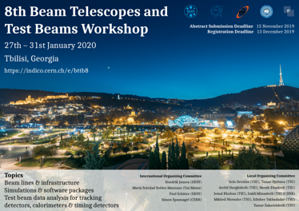Speaker
Description
Over the past decade, proton and ion-beam therapy has become an established form of cancer treatment. Currently, the achievable precision of this therapy is limited by uncertainties due to treatment planning based on conventional photon imaging. A significant effort is therefore invested into the development of proton or ion imaging modalities. A typical apparatus for such applications consists of a front and rear tracking detector, which surrounds the target, followed by a calorimeter.
Low Gain Avalanche Detectors (LGADs) are a rather new technology that would be particularly well suited as time-of-flight calorimeter for such applications. While for the detection of minimum ionising particles (MIPs) their resolution is typically limited to around 30 ps due to Landau fluctuations, it is expected that for higher energy deposits, such as from a few hundred MeV proton beam, this limitation is reduced. Additionally, they would allow to simplify the full detector concept by eliminating the rear tracking detector as the spatial resolution of existing LGAD designs is most likely already enough to improve the tracking accuracy below the multiple Coulomb scattering (MCS) limit.
At the MedAustron particle therapy centre, proton energies between 62 MeV and 800 MeV as well as carbon ions between 120 MeV/n and 400 MeV/n are available for treatment and research purposes. Beam test results on the timing performance of LGADs at those beam energies will be shown and their possible application to ion imaging will be discussed.
